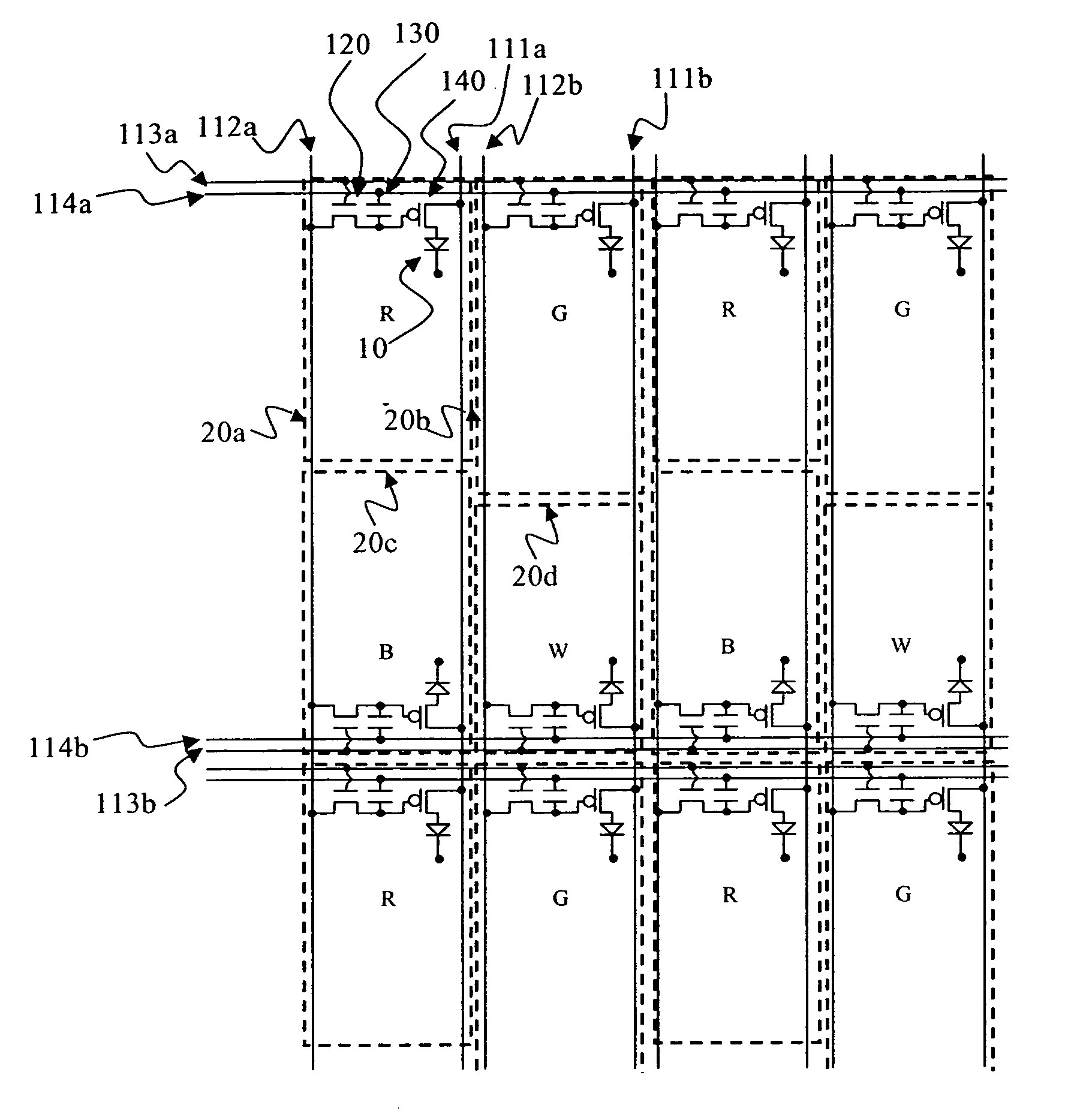OLED displays with varying sized pixels
a technology of oled displays and pixels, applied in the field of oled displays, can solve the problems of undesirable bending of signal lines, impracticality of approaching, signal lines becoming bent, etc., and achieve the effect of reducing resistance and less surface area
- Summary
- Abstract
- Description
- Claims
- Application Information
AI Technical Summary
Benefits of technology
Problems solved by technology
Method used
Image
Examples
first embodiment
[0035] The emitting areas of the pixels can be adjusted without bending of any of the signal lines by adjusting the size of the emitting area in the column direction, or height (H), or adjusting the size of the emitting area in the row direction, or width (L). According to the present invention, by disposing select line 113a and select line 113b on the outside of their associated pixels, different heights of the pixel emitting areas can be achieved for pixels in the same row, as shown. That is, the emitting areas of pixels 20a, 20b, 20c, and 20d are disposed between select line 113a and select line 113b, permitting the select lines to be formed in a linear, unbending, fashion. That is, a signal line, such as the select line, are considered to be linear if they form a straight path between all the pixels connected to the signal line. The signal line may vary in width along its length and still be considered linear. Therefore by providing the select lines of these two adjacent rows of...
second embodiment
[0052] By forming a display according to the second layout embodiment, the emitting areas of the pixels can be adjusted without bending of any of the signal lines by adjusting the size of the emitting area in the column direction, or height (H), or adjusting the size of the emitting area in the row direction, or width (L). According to the present invention, different heights of the pixel emitting areas can be achieved for pixels in the same row and different widths of the pixel emitting area can be achieved for pixels in the same column, as shown. That is, the emitting areas of pixels 20a, 20b, 20c, and 20d are disposed between select line 113a and select line 113b, between power line 111a and power line 111b, and between data line 112a and data line 112b, permitting these signal lines to be formed in a linear, unbending, fashion. Therefore, pixels in the same row may be provided with different heights, such as height H6 of pixel 20d and height H7 of pixel 20c. Pixels in the same r...
PUM
 Login to View More
Login to View More Abstract
Description
Claims
Application Information
 Login to View More
Login to View More - R&D
- Intellectual Property
- Life Sciences
- Materials
- Tech Scout
- Unparalleled Data Quality
- Higher Quality Content
- 60% Fewer Hallucinations
Browse by: Latest US Patents, China's latest patents, Technical Efficacy Thesaurus, Application Domain, Technology Topic, Popular Technical Reports.
© 2025 PatSnap. All rights reserved.Legal|Privacy policy|Modern Slavery Act Transparency Statement|Sitemap|About US| Contact US: help@patsnap.com



